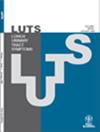Urinary incontinence in the postpartum 1-year period: Its prevalence and effect on psychosocial status of women
Abstract
Objectives
In this study, it was aimed to determine the prevalence and effect of urinary incontinence in the postpartum 1 year period on psychosocial status of women.
Methods
This study with a cross-sectional and descriptive design was conducted between 01.10.2021 and 01.04.2022. There were 406 women in the postpartum 8 weeks to 1 year period who participated in the study. The data were collected through Identifying Information Form, Edinburgh Postnatal Depression Scale, and Nottingham Health Profile.
Results
In the study, it was determined that 21.9% of the women in the postpartum period experienced urinary incontinence problems, and that the most common type of incontinence experienced was stress incontinence (62.9%). Edinburgh Postnatal Depression Scale mean score of the women who experienced urinary incontinence problems in the postpartum period was found to be significantly higher compared to those who did not experience this problem (P < .05), but no significant difference was found between the rates of those with depression risk according to the cutoff point of the scale (≥13 points). As a result of the regression analysis, it was determined that the increase in depression risk resulted not from urinary incontinence but from age and parity. It was also determined that the mean scores of the women who experienced incontinence problems from the subscales of Nottingham Health profile was significantly high (P < .05).
Conclusions
In conclusion, urinary incontinence in the postpartum period is a prevalent problem affecting approximately one-fifth of women. In addition, this problem negatively affects the psychological and social dimensions of women's health.

 求助内容:
求助内容: 应助结果提醒方式:
应助结果提醒方式:


